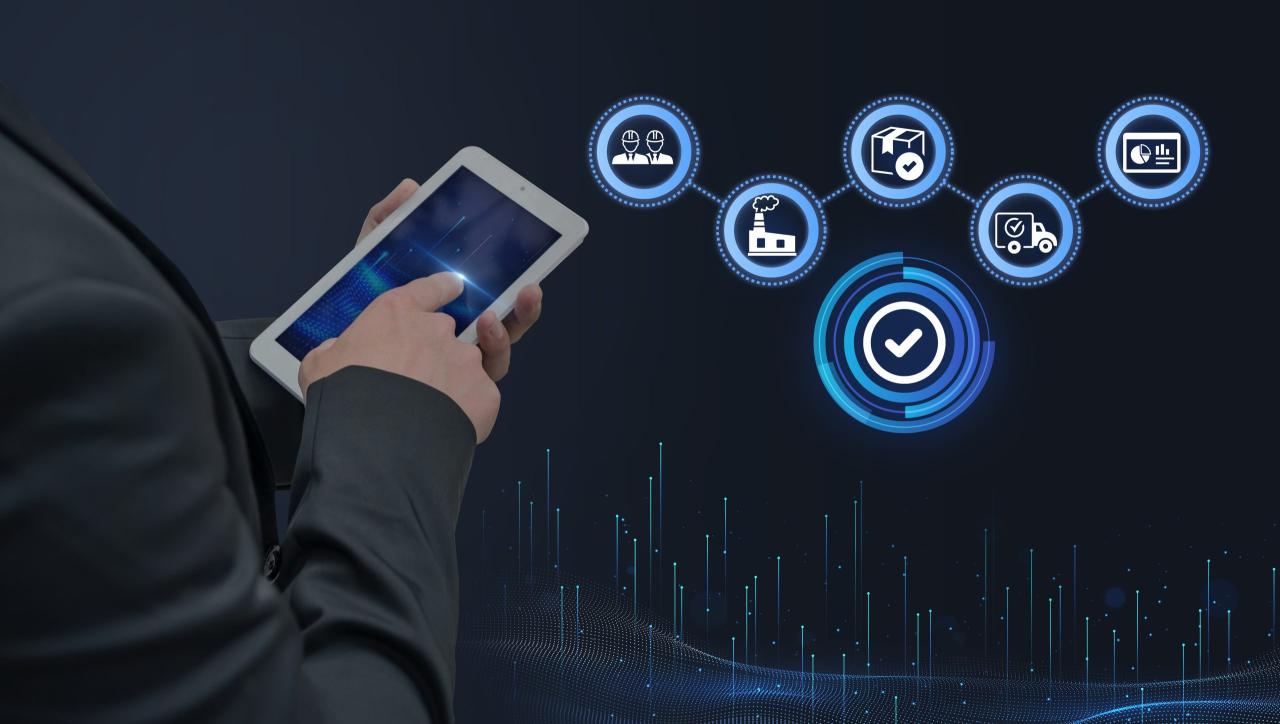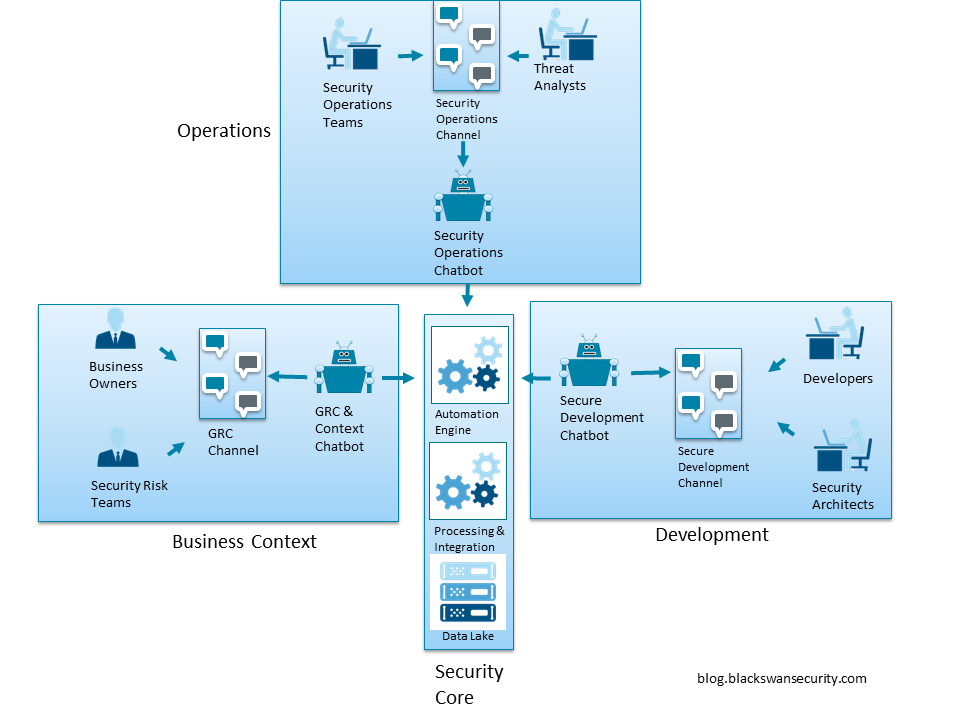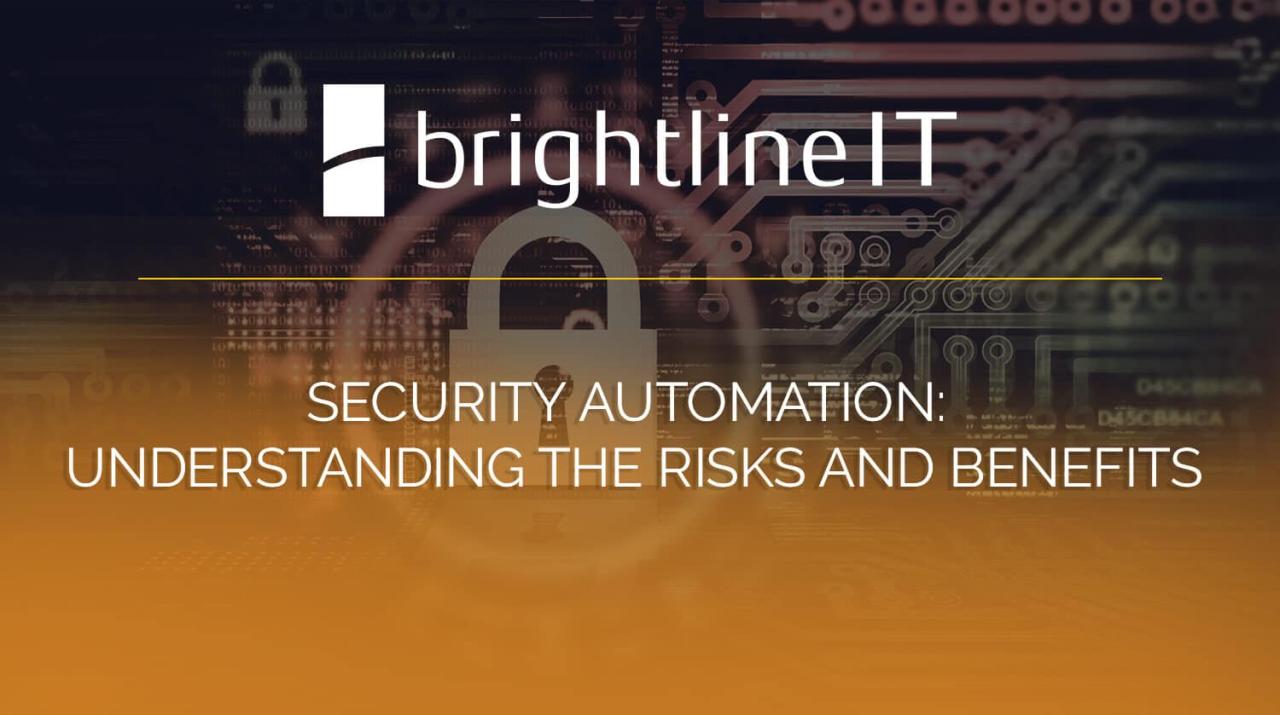
How Intelligent Security Automation Can Relieve Your Boards Biggest Security Pains
How intelligent security automation can relieve your board directors biggest security pains is a question increasingly crucial in today’s volatile digital landscape. Board members face immense pressure to ensure robust cybersecurity, balancing the need for innovation with the ever-present threat of costly breaches and reputational damage. This isn’t just about preventing financial losses; it’s about protecting the company’s future and maintaining stakeholder trust.
This post explores how intelligent security automation can significantly mitigate these risks.
We’ll delve into the specific anxieties that keep board directors awake at night, examining the real-world consequences of security failures and the substantial financial and reputational repercussions. Then, we’ll show how intelligent automation transforms threat detection, response, and overall security posture. We’ll explore specific automation capabilities, showcase successful real-world applications, and discuss future trends shaping this critical field.
Understanding Board Director Security Concerns

Board directors, ultimately responsible for the success and stability of their organizations, face increasing pressure regarding cybersecurity. Their anxieties stem from the potential for significant financial losses, reputational damage, and legal repercussions resulting from security breaches. Understanding these concerns is crucial for implementing effective security strategies.
Top Three Security Anxieties of Board Directors
The top three anxieties consistently reported by board directors revolve around the likelihood of a major data breach, the inability to adequately respond to a sophisticated cyberattack, and the lack of visibility into their organization’s overall security posture. These anxieties are fueled by the ever-evolving threat landscape and the increasing sophistication of cybercriminals. The consequences of failing to address these anxieties can be catastrophic.
Financial Ramifications of Security Breaches
Significant security breaches can inflict devastating financial blows on large corporations. Direct costs include incident response, legal fees, regulatory fines (like GDPR penalties), and remediation efforts. Indirect costs are equally damaging and often harder to quantify, encompassing lost revenue, decreased customer trust, and the cost of rebuilding reputation. For example, the 2017 Equifax breach cost the company over $700 million in fines, legal settlements, and other expenses.
The impact on share price can also be substantial, eroding shareholder value and damaging investor confidence. These costs far exceed the investment in robust security measures.
Reputational Damage from Security Failures
Beyond the financial impact, data breaches and security failures severely damage a corporation’s reputation. Loss of customer trust is perhaps the most significant consequence. Customers are increasingly wary of organizations that fail to protect their data, leading to decreased customer loyalty and reduced sales. Negative media coverage further amplifies the reputational damage, potentially driving away investors and partners.
The long-term effects can be crippling, making it difficult for the organization to regain its standing in the market. The Target breach of 2013, for instance, resulted in a significant drop in customer trust and a lasting negative impact on the company’s brand image.
Examples of Real-World Security Incidents Causing Board-Level Concern
Several real-world examples highlight the severity of security incidents and their impact on board-level decision-making. The Yahoo! data breaches, spanning multiple years, exposed billions of user accounts, leading to significant financial penalties and reputational damage. The NotPetya ransomware attack in 2017 caused widespread disruption and billions of dollars in losses across numerous global corporations, forcing boards to grapple with the fallout and implement significant security upgrades.
These incidents underscore the importance of proactive security measures and robust incident response plans at the highest levels of an organization.
How Intelligent Security Automation Addresses Pain Points
Board directors are increasingly concerned about cybersecurity threats. Intelligent security automation offers a powerful solution, significantly mitigating many of their biggest headaches by streamlining processes, improving response times, and reducing reliance on often-overstretched human resources. This technology shifts the security paradigm from reactive to proactive, offering a more robust and efficient defense against the ever-evolving threat landscape.Intelligent automation improves threat detection and response times through the use of machine learning and artificial intelligence.
These technologies enable systems to analyze vast amounts of security data far faster and more thoroughly than human analysts ever could, identifying anomalies and potential threats in real-time. This speed allows for immediate remediation, minimizing the window of vulnerability and the potential impact of a successful attack. For example, an intelligent system might detect a suspicious login attempt from an unusual location and automatically block it, preventing a potential breach before it escalates.
Improved Threat Detection and Response Times
Intelligent security automation employs machine learning algorithms to analyze security logs, network traffic, and other data sources, identifying patterns and anomalies indicative of malicious activity. This surpasses traditional signature-based detection methods, which rely on known threats and are often slow to adapt to new attack vectors. The speed of detection is dramatically increased, allowing for rapid response and mitigation before significant damage occurs.
Consider a scenario where a Distributed Denial of Service (DDoS) attack is launched against a company’s website. An intelligent system can detect the unusual surge in traffic almost immediately, automatically implementing mitigation strategies like traffic filtering and load balancing, minimizing service disruption.
Reduced Reliance on Human Intervention
Automation reduces the need for constant human monitoring and intervention. Intelligent systems can automate repetitive tasks such as vulnerability scanning, patch management, and log analysis, freeing up security personnel to focus on more strategic initiatives, like threat hunting and incident response planning. This not only improves efficiency but also reduces the risk of human error, a common factor in security breaches.
For instance, the automated patching of vulnerabilities ensures that systems are consistently protected against known exploits, eliminating the potential for delays caused by manual processes. This automated patching is far more consistent and reliable than manual processes.
Traditional Security Methods vs. Intelligent Automation
Traditional security methods, while still valuable components of a robust security posture, often struggle to keep pace with the sophistication and volume of modern cyber threats. They rely heavily on human intervention, are often reactive rather than proactive, and struggle to analyze the sheer volume of data generated by today’s interconnected systems. Intelligent automation, on the other hand, leverages AI and machine learning to proactively identify threats, automate responses, and analyze data at a scale and speed that human analysts cannot match.
The result is a significant improvement in overall security posture and reduced response times.
Enhanced Incident Response and Minimized Downtime
In the event of a security incident, intelligent automation can significantly accelerate the response process. Automated systems can quickly isolate affected systems, contain the breach, and initiate recovery procedures, minimizing downtime and data loss. For example, if a ransomware attack is detected, the system can automatically quarantine infected machines, preventing the spread of malware and limiting the damage.
Furthermore, automated incident response playbooks can guide the response team through established procedures, ensuring consistent and efficient handling of incidents. This rapid and efficient response dramatically reduces the financial and reputational damage associated with security incidents.
Specific Automation Capabilities and Their Benefits: How Intelligent Security Automation Can Relieve Your Board Directors Biggest Security Pains
Intelligent security automation isn’t just a buzzword; it’s a practical solution that directly addresses the anxieties of board directors concerning cybersecurity. By automating various security functions, organizations can significantly reduce risk, improve response times, and enhance overall security posture. This translates to a more confident board, better informed decision-making, and a stronger bottom line.
The benefits of intelligent security automation are multifaceted, impacting various aspects of cybersecurity management. This section will delve into specific automation capabilities, showcasing their individual impact on reducing board-level concerns and illustrating how they contribute to a more robust and resilient security framework.
Types of Security Automation and Their Impact on Board-Level Anxieties
Different types of security automation address specific security challenges. The following table compares several key areas and their effects on reducing board concerns:
| Automation Type | Specific Capabilities | Impact on Board Anxieties | Example |
|---|---|---|---|
| Vulnerability Management | Automated vulnerability scanning, patching, and prioritization | Reduces risk of exploitation, improves compliance, minimizes downtime | Automated scans identify and prioritize critical vulnerabilities in web applications, allowing for rapid patching before attackers can exploit them. |
| Incident Response | Automated threat detection, alert triage, and incident containment | Faster response times, reduced damage from breaches, improved incident handling efficiency | Automated systems detect malicious activity, automatically isolate infected systems, and initiate incident response protocols, minimizing the impact of a ransomware attack. |
| Threat Intelligence | Automated threat feed analysis, threat hunting, and security information and event management (SIEM) correlation | Proactive threat identification, improved prevention capabilities, enhanced situational awareness | Automated systems analyze threat feeds, identify emerging threats relevant to the organization, and proactively adjust security controls to mitigate potential risks. |
| Security Information and Event Management (SIEM) | Automated log aggregation, analysis, and correlation, providing real-time visibility into security events | Improved threat detection, faster incident response, better compliance auditing | The SIEM system automatically collects and analyzes security logs from various sources, identifying suspicious activities and providing alerts to security teams. |
Streamlining Security Audits and Compliance Reporting
Security audits and compliance reporting are often time-consuming and resource-intensive processes. Intelligent security automation can significantly streamline these tasks, reducing the burden on security teams and providing board directors with timely, accurate information.
For instance, automated systems can collect and analyze audit logs, generate reports automatically, and flag any potential compliance violations. This allows for proactive identification and remediation of issues, reducing the risk of non-compliance penalties and improving overall security posture. Automated reporting tools can also provide dashboards displaying key compliance metrics, giving board members a clear and concise overview of the organization’s security status.
Hypothetical Scenario: Preventing a Data Breach Through Automation
Imagine a scenario similar to the Target data breach of 2013. Suppose Target had implemented robust security automation. An automated system could have detected the malicious code injected into the HVAC vendor’s network far earlier. This early detection, coupled with automated threat intelligence analysis, could have identified the compromised credentials and flagged the unusual network activity. Automated incident response systems could have then isolated the infected systems, preventing the exfiltration of customer data.
The rapid response facilitated by automation would have minimized the breach’s impact, preventing the massive financial and reputational damage suffered by Target.
Key Performance Indicators (KPIs) for Intelligent Security Automation
Measuring the effectiveness of intelligent security automation requires a focus on relevant KPIs. These metrics provide concrete evidence of the value delivered and help demonstrate the ROI to the board.
Key indicators include:
- Mean Time To Detect (MTTD): The average time it takes to identify a security incident.
- Mean Time To Respond (MTTR): The average time it takes to resolve a security incident.
- Number of security incidents detected and resolved automatically.
- Reduction in the number of security vulnerabilities.
- Improved compliance scores.
- Cost savings from reduced downtime and incident response costs.
Case Studies

Intelligent security automation isn’t just a theoretical concept; it’s delivering tangible results for organizations across various sectors. Let’s delve into some real-world examples showcasing how these solutions have addressed critical board-level security concerns and improved overall security posture. These case studies illustrate the diverse approaches to implementation and the significant benefits achieved.
Financial Institution X: Reducing Fraudulent Transactions, How intelligent security automation can relieve your board directors biggest security pains
Financial Institution X, a large multinational bank, faced increasing challenges with fraudulent transactions. Their legacy security systems were struggling to keep pace with sophisticated attack vectors. Implementing an intelligent security automation platform allowed them to analyze vast amounts of transaction data in real-time, identifying anomalous patterns indicative of fraud far more efficiently than their previous methods. The automation system flagged suspicious transactions for immediate review, significantly reducing the time it took to detect and stop fraudulent activities.
Measurable improvements included a 40% reduction in fraudulent transactions within the first six months of implementation and a 25% decrease in the average cost per fraudulent incident due to faster response times and reduced manual investigation. The challenge they faced initially was integrating the new system with their existing legacy infrastructure, requiring significant effort in data mapping and system configuration.
This was overcome through phased implementation and close collaboration between their IT and security teams.
Healthcare Provider Y: Strengthening HIPAA Compliance
Healthcare Provider Y, a large hospital network, was under immense pressure to ensure strict HIPAA compliance. Their previous security measures relied heavily on manual processes, which were time-consuming and prone to errors. By deploying an intelligent security automation system focused on data loss prevention (DLP), they automated the monitoring of sensitive patient data across their network. The system automatically flagged any unauthorized access attempts or data breaches, significantly improving their ability to identify and respond to potential violations.
The measurable impact included a 70% reduction in HIPAA compliance violations and a 30% decrease in the time spent on compliance audits. The biggest challenge they encountered was ensuring the automation system didn’t inadvertently block legitimate access to patient data. This was addressed by fine-tuning the system’s rules and thresholds based on extensive testing and feedback from clinical staff.
Retailer Z: Improving Incident Response Times
Retailer Z, a global e-commerce company, experienced a significant increase in cyberattacks targeting their online platform. Their existing security team was struggling to respond effectively to the volume and complexity of these incidents. The implementation of an intelligent security automation platform provided automated threat detection and response capabilities. The system automatically detected and responded to common attack vectors, such as denial-of-service attacks and malware infections, significantly reducing the impact of these incidents.
The results included a 60% reduction in the average time to resolve security incidents and a 20% decrease in the overall cost of security incidents. The initial challenge was ensuring the automation system integrated seamlessly with their existing security information and event management (SIEM) system. This was achieved through careful planning and close collaboration with their SIEM vendor.
Future Trends and Considerations

Intelligent security automation is rapidly evolving, promising even greater relief from board-level security anxieties in the coming years. Understanding the emerging trends, ethical considerations, and integration strategies is crucial for maximizing the benefits of these advancements and mitigating potential risks. This section explores key future directions and provides actionable recommendations for board directors.The landscape of cybersecurity is constantly shifting, driven by the increasing sophistication of cyber threats and the proliferation of interconnected devices.
Intelligent security automation must adapt to these changes to remain effective. This necessitates a proactive approach to integrating new technologies and addressing emerging ethical challenges.
Emerging Trends in Intelligent Security Automation
Several trends are poised to significantly enhance the capabilities of intelligent security automation, further reducing the burden on security teams and improving overall organizational resilience. These advancements will lead to more proactive threat detection, faster response times, and a reduced reliance on manual intervention. For example, the increasing use of AI-powered threat hunting platforms allows security teams to proactively identify and neutralize threats before they can cause significant damage.
This is a significant improvement over reactive security measures that only respond to incidents after they have occurred. Furthermore, the integration of blockchain technology into security automation promises improved data integrity and auditability, enhancing trust and transparency. This allows for more secure and verifiable logging of security events, strengthening accountability and simplifying compliance efforts. Finally, the rise of autonomous security operations centers (ASOCs) will further automate incident response, reducing the need for human intervention in many routine tasks.
This allows human security analysts to focus on more complex and strategic tasks, improving overall efficiency.
Ethical Implications of AI and Automation in Security
The increasing reliance on AI and automation in security raises important ethical considerations. Bias in algorithms, for example, can lead to discriminatory outcomes, such as unfairly targeting certain groups or individuals. Transparency and explainability are crucial to ensure that automated security decisions are fair and justifiable. Furthermore, the potential for misuse of AI-powered security tools, such as for mass surveillance or unauthorized data collection, must be carefully considered and mitigated through robust ethical guidelines and regulatory frameworks.
The potential for autonomous weapons systems also necessitates careful consideration of the ethical implications of delegating life-or-death decisions to machines. Robust oversight mechanisms and ethical frameworks are essential to prevent unintended consequences and ensure responsible innovation in this area. The development and implementation of ethical guidelines, along with regular audits and assessments, will help mitigate these risks and foster trust in the technology.
Integrating Intelligent Security Automation with Existing Infrastructure
Successful implementation of intelligent security automation requires careful integration with existing security infrastructure. This involves assessing current systems, identifying compatibility issues, and developing a phased implementation plan. A gradual approach allows organizations to test and refine their automation strategies while minimizing disruption to ongoing operations. Furthermore, effective integration requires robust data sharing and interoperability between different security tools and platforms.
This ensures that the automated system has access to all relevant information needed to make informed decisions. Organizations should prioritize the selection of security automation solutions that seamlessly integrate with their existing systems, minimizing the need for costly and time-consuming customizations. Investing in skilled personnel capable of managing and maintaining the integrated system is also crucial for long-term success.
Recommendations for Board Directors Considering Implementing Intelligent Security Automation
Board directors play a crucial role in guiding the adoption of intelligent security automation. They should prioritize the following actions:
- Conduct a thorough risk assessment to identify key vulnerabilities and prioritize areas for automation.
- Develop a clear strategy for integrating intelligent security automation with existing security infrastructure.
- Establish robust governance and oversight mechanisms to ensure responsible use of AI and automation in security.
- Invest in training and development to equip security teams with the skills needed to manage and maintain the automated system.
- Regularly review and update the security automation strategy to adapt to evolving threats and technologies.
- Engage with external experts to assess the effectiveness of the implemented solution and identify areas for improvement.
- Establish clear metrics for measuring the success of the intelligent security automation initiative.
End of Discussion
In conclusion, intelligent security automation isn’t just a technological upgrade; it’s a strategic imperative for modern organizations. By proactively addressing vulnerabilities, automating responses, and providing real-time insights, it empowers boards to make informed decisions, minimize risks, and build a more resilient security framework. The benefits extend beyond immediate cost savings, encompassing enhanced reputation, improved stakeholder confidence, and a more secure future for the entire organization.
Investing in intelligent security automation is an investment in the long-term health and success of your business.
General Inquiries
What are the common misconceptions about implementing intelligent security automation?
Many believe it’s prohibitively expensive or complex. While initial investment is required, the long-term cost savings from reduced breaches and improved efficiency often outweigh the upfront costs. Furthermore, many solutions offer scalable implementations to fit varying organizational needs.
How can I measure the ROI of intelligent security automation?
Key Performance Indicators (KPIs) like reduced mean time to resolution (MTTR) for security incidents, decreased frequency of breaches, lower costs associated with incident response, and improved compliance scores provide quantifiable evidence of ROI.
What are the ethical considerations around using AI in security automation?
Ethical concerns include potential biases in AI algorithms, the need for transparency in decision-making processes, and the responsible use of data. Careful selection of vendors and a robust ethical framework are crucial for mitigating these risks.
How do I choose the right intelligent security automation solution for my organization?
Consider your specific needs and existing infrastructure. Look for solutions that integrate seamlessly with your current systems, offer scalable solutions, and provide robust reporting and analytics. Engage with vendors to assess their expertise and alignment with your organizational goals.





